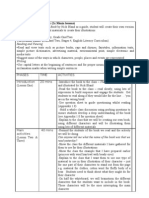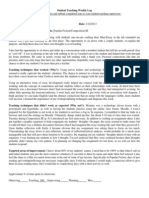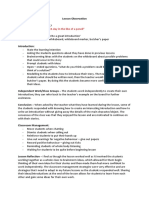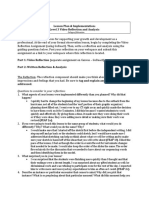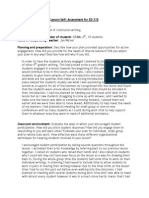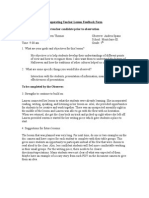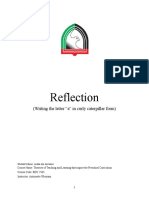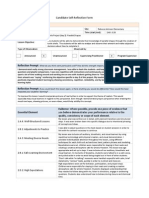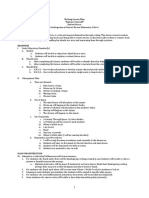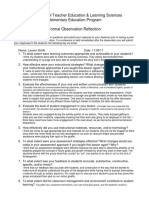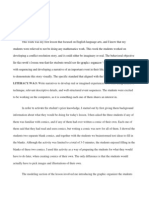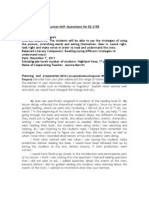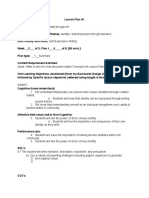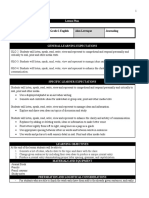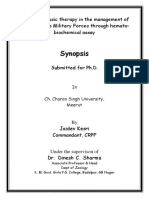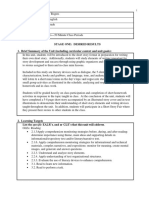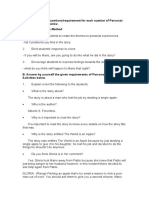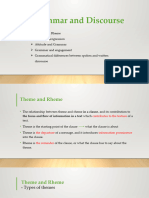1.
An overview of the lesson:
a. The lesson started with a quick redefinition of personification, and then moved to a quick
draw. I first modelled what the quick draw would look like, and drew myself as a pencil.
Then, I told them they had to do it. They folded a big piece of construction paper into 4
sections and then I gave them one minute for each section and made them move onto
the next section of the paper. After they finished all four sections I had them choose one,
cut it out and throw the rest away.
After the quick draw, I modelled a planning session for them with my cooperating teacher
and then had them do a planning session with a partner. After the pair-share, I asked
them to write down what their character would think, say and do and collected their work.
2. Explicit details regarding the strategies you incorporated into your lesson and how they were
chosen to support specific students
a. Some of the students had not done any physical writing for almost a year, so I wanted to
really focus on planning since it was quite clear they were extremely intimidated by the
empty page. Some of the students who had been struggling, specifically, Elia and Ruby,
really love to draw, so I decided to start the lesson with drawing so that they felt more
comfortable.
I modelled both the quick draw and the pair-share for the students since I knew the quick
draw might be intimidating and they had not done a partner planning session in an
extremely long time. I tried to make both the modelling sessions slightly silly, I let them
choose what I would be drawing myself as, so that it would be as light and relaxed as
possible.
I had them go quickly with the drawings and then choose one and throw away the rest so
that they would not get hung up on making a perfect drawing, but would still have a sense
of autonomy in choosing the best one. I also made some accommodations and allowed
Elia and Juliette to take four minutes to make one drawing instead of four minutes to
make four drawings because they both have severe anxiety. Four minutes is still much
shorter than they would normally take to draw something, but I think knowing the other
students had even less time made them feel more comfortable.
3. A reflection of the lesson, including a response to the feedback given by your supervisor
a. The lesson went decently well. My biggest lesson from the lesson was that I should never
put Elia and Juliette, who are twins, together. They both have extremely bad anxiety, but
they feed off each in an extremely negative way. They are seated next to each other in
class because they share an aide and asked my cooperating teacher to sit next to each
other, but for group work now I just have them move around the room to be with other
people. Mandy, my supervisor, also recommended that I be more explicit with my
instructions, repeat them more often and check in with the students more and she was
definitely correct. At one point Elia definitely drifted off into her own world and I did not
notice it for a little while.
4. Suggestions for what to do as a follow-up lesson
a. The next lesson I had them actually use their notes from planning to write a short story.
�5. Suggestions for what you could do differently in the future if you were to teach this lesson again
a. Due to grouping with the return to school, this actually was the second time I taught this
lesson, and I made a relatively significant number of changes after the first lesson. This
lesson went relatively well and the main changes I would make are to just not pair Elia
and Juliette together and to check in with Elia earlier in the lesson so that she does not
fall too far behind the group.







